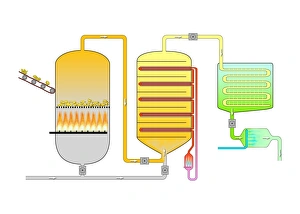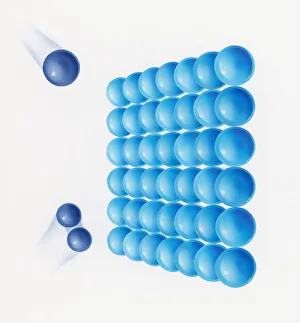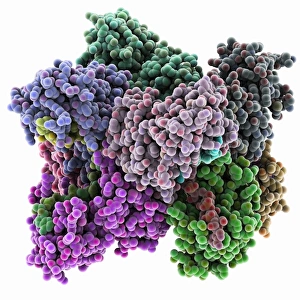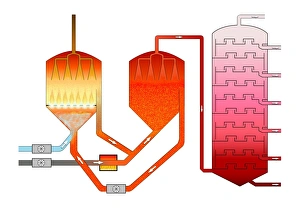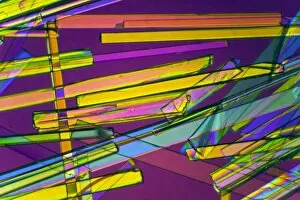Catalysis Collection
"Catalysis: Unleashing the Power of Chemical Transformations" Catalysis, a concept pioneered by Wilhelm Ostwald, the German physical chemist
All Professionally Made to Order for Quick Shipping
"Catalysis: Unleashing the Power of Chemical Transformations" Catalysis, a concept pioneered by Wilhelm Ostwald, the German physical chemist, has revolutionized the field of chemistry. Through his groundbreaking work, Ostwald laid the foundation for understanding and harnessing catalytic processes that drive numerous chemical reactions. One such technique is Raman laser spectroscopy, which allows scientists to analyze molecular vibrations and gain insights into catalytic mechanisms at an atomic level. This powerful tool enables us to unravel the intricate dance between reactants and catalysts. Imagine a scenario where reactants approach a surface; one of them being a diatomic molecule. In this illustration of catalysis, we witness how catalysts facilitate chemical transformations by providing an ideal environment for reactions to occur efficiently. Nature itself showcases remarkable examples in action. The hammerhead ribozyme molecule (F006 / 9492) and lumazine synthase molecule (F006 / 9291) exemplify enzymes that accelerate vital biochemical processes within living organisms. RNA-induced silencing complex plays a crucial role in gene regulation by selectively degrading specific messenger RNA molecules. This fascinating mechanism highlights how catalytic systems can fine-tune biological functions with precision. Transposase enzyme-DNA complexes demonstrate another facet - genetic rearrangement. These enzymes enable DNA segments to move from one location to another within genomes, influencing evolution and genetic diversity. Methane monooxygenase enzyme stands as nature's solution for converting methane gas into more useful compounds. By activating inert carbon-hydrogen bonds through oxidation, this enzyme showcases the immense potential of biocatalysts in addressing environmental challenges like greenhouse gas emissions.



